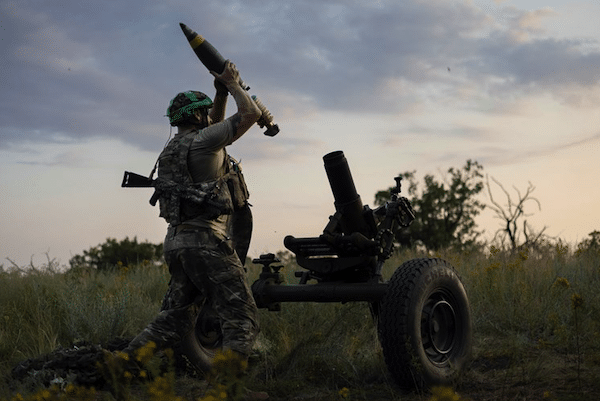Donetsk city center came under “a massive chaotic attack” on Tuesday with plumes of smoke seen for miles as Ukrainian shelling hit densely populated areas during peak hours.
Acting head of the Donetsk People’s Republic Denis Pushilin said that 169 munitions had been launched including rocket and canon artillery fire with NATO-supplied munitions.
The city was pounded for most of the day, with explosions heard from 11 am. Four people were wounded over the course of the day, although the state of their injuries is unknown at this stage.
Once again it was civilian areas that bore the brunt of the Ukrainian barrage with at least 17 residential buildings damaged in the Voroshilovsky, Kievsky, Petrovsky, and Kuibyshevsky districts.
“What we experienced today was real horror,” pensioner Svetlana Ivanova said after she came under fire in the Kievsky district.
“How is it possible to shoot where civilians live? There is nowhere left in Donetsk anymore,” she added.
A hospital was also struck in the attack while a stadium in Donetsk city was badly affected after a fire broke out due to the shelling.
At least 12 trolleybuses were damaged after shrapnel caused a blaze at the depot in the Kievsky district. Officials said they would be repaired and back in action by next week.
Locals there found the remnants of a NATO missile after the shelling by Ukrainian forces.
Footage showed English inscriptions on the body of the munition and the engine compartment of a US-made AGM-88 HARM anti-radar missile. These missiles are used for radio reconnaissance and the detection of enemy radar stations along their route.
Air defenses were working overtime as they battled to repel the continued Ukrainian attacks which continued into the night.
Once again, a man was wounded by a petal mine in the city of Gorlovka, close to the Ukrainian frontline.
The banned munition was also found in the Petrovsky district of Donetsk, although it was spotted before it could explode.
Reports that cluster munitions had been used in the Petrovsky district circulated on local Telegram channels and social media; however, there is no evidence to support this, and officials made no mention in their daily updates.
It does, however, reveal a belief among locals that Ukraine would use the controversial munitions on civilian populations. This fear is not unfounded.
In October 2014, soon after the conflict broke out in Donbass, the Ukrainian Army was accused of firing cluster munitions into the heart of Donetsk City.
According to the New York Times, there were “clear signs that cluster munitions had been fired from the direction of [Ukrainian] army-held territory, where misfired artillery rockets still containing cluster bomblets were found by villagers in farm fields.”
The newspaper based its conclusion on physical evidence and interviews with victims and witnesses.
It is believed that Ukraine has used cluster munitions on civilian areas in the Zaporozhye region in the last week.
RIA Novosti war correspondent Rostislav Zhuralev was killed as a car he was traveling in was struck during Ukrainian shelling on Saturday.
He was with a group of journalists that had been preparing a report on the use of cluster bombs when he fell victim to the very munitions he was investigating.
UNESCO and the International Federation of Journalists condemned the killing and have called for swift investigations.
Russian foreign ministry spokeswoman Maria Zakharova said the attack was not merely by chance, accusing Ukraine of seeking to cover up its use of cluster munitions.

